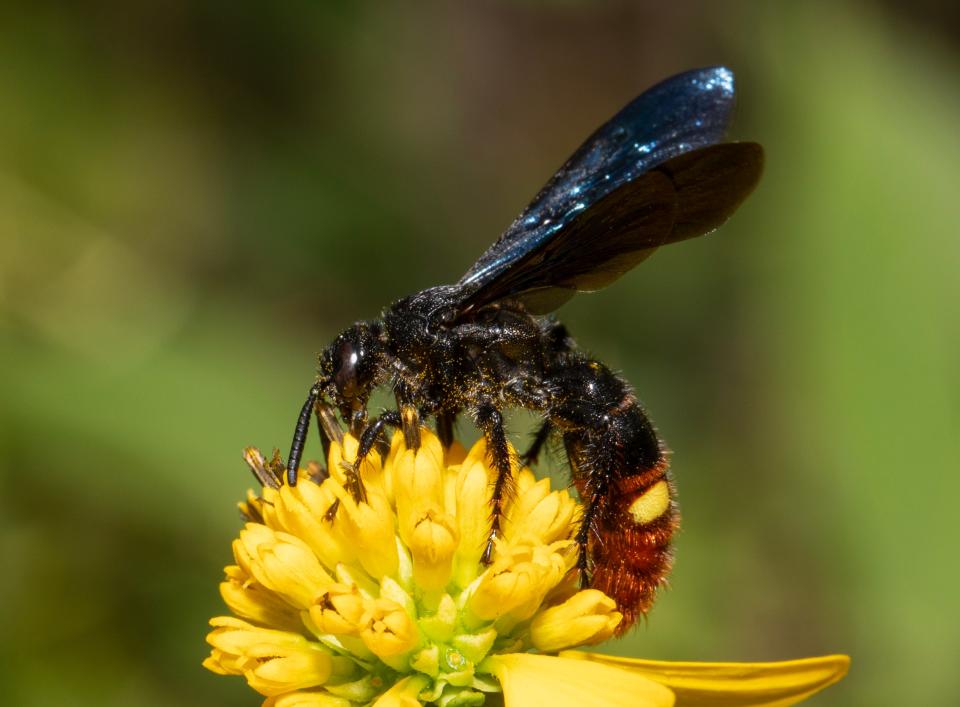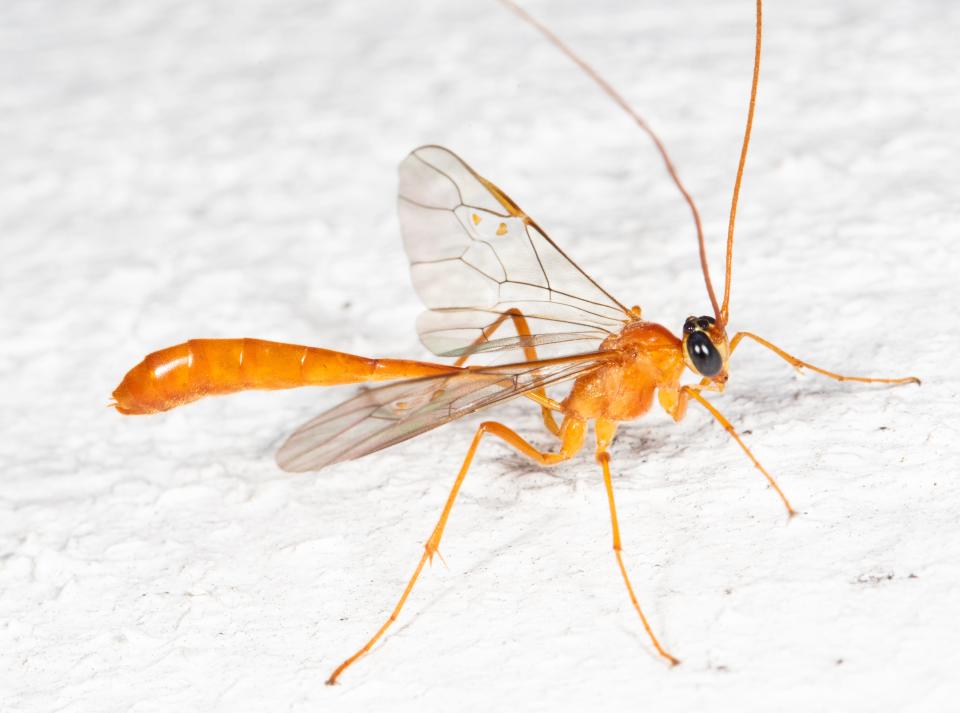Nature: Parasitoid wasps prey during the summer months
We humans have our fair share of parasites, some annoying, some dangerous. Common parasitic predators include bed bugs, lice, roundworms, tapeworms and ticks.
Some of these and others can cause serious issues, such as malaria-transmitting mosquitoes or ticks carrying Lyme disease. Fortunately, most parasitically transmitted diseases can be cured, especially if caught early.
Things could be far worse for people, were we besieged by parasitoids. While parasites generally don’t kill their hosts, parasitoids always do.

Imagine this: One fine day, you’re working in the garden when a giant female wasp suddenly buzzes upon you and delivers a punishing sting before you know what hit you. A powerful neurotoxin quickly immobilizes your motor functions, rendering you as helpless as one of the vegetables you were tending.
Nature: A portal to Ohio's glacial past can be found at Cedar Bog
The duck-sized wasp, equipped with superman strength, then seizes your inert body and drags you to a premade crypt in nearby soft soil. Unfortunately, your mind still functions perfectly, so you have a ringside seat to your hideous fate. She shoves you into the hole, lays an egg as a going away present and seals the entrance.
After lying in your musty tomb for a few days, the egg hatches and out crawls a hideous white larva. The killer grub feasts on your moribund flesh, eventually consuming you whole.
While this Poe-like tale may seem the stuff of horror genres, it happens all around us on a scope and scale incomprehensible to even the most ambitious psychopath. And an especially speciose group of parasitoid animals are the wasps. And fortunately for you and me, they are tiny, not waterfowl-sized.

Such is the grisliness of death by parasitoid wasp that it prompted Charles Darwin to write his intellectual confidant, the American botanist Asa Gray, questioning parasitoids. A passage in his letter of May 22, 1860 stated “I cannot persuade myself that a beneficent & omnipotent God would have designedly created the Ichneumonidæ (a family of parasitoid wasps) with the express intention of their feeding within the living bodies of caterpillars…”
Legions of wasps, mostly tiny and unnoticed, ply their trade at the expense of inestimable numbers of caterpillars of moths and butterflies.
Many tomato-growers have seen the fruits of an elfin wasp, known as Cotesia congregata. Females inject eggs into the tobacco hornworm, a caterpillar noted for feasting on tomato plants.
Nature: Ospreys are flying fishermen
Along with the egg comes a powerful virus and venom. In a complex process, those chemicals radically alter the development of the caterpillar and create a better growing environment for the grubs feeding within its body. In a grand finale, the wasp grubs bore out of the host’s body and spins silken cocoons.
An afflicted caterpillar looks like it is bristling with miniature white mummies. Adult wasps soon pop from their cocoons and start the cycle anew.
Most parasitoid wasps dispatch prey in some such hideous manner, including entombing their paralyzed bodies.

The blue-winged wasp pictured with this column preys on beetle grubs, including the invasive Japanese beetle. Other wasps victimize cicadas, crickets, katydids, spiders, stinkbugs, walkingsticks, water striders and probably every other arthropod group. In all, perhaps 700,000 or so parasitoid wasp species are estimated to exist, but it’s probable that the number is far higher.
Even the parasitoids are not immune to victimization. A second level, known as hyperparasitoids, preys on the eggs or larvae of primary parasitoids. Some hyperparasitoid wasps are the size of a grain of salt.
Darwin was judging the seeming horrors of parasitoids from the very fallible human perspective. In reality, they represent a pinnacle of insect evolution and are vital parts of food chains. Parasitoids hold other insect populations in balance, and in turn provide food for scores of other predators. Many parasitoid wasps are important pollinators, too.
Fortunately for us, parasitoid wasps confine their activities to nonvertebrate animals, so humans are safe. At least for the present.
Naturalist Jim McCormac writes a column for The Dispatch on the first and third Sundays of the month. He also writes about nature at jim mccormac.blogspot.com.
This article originally appeared on The Columbus Dispatch: Nature: What to know about wasps in your garden

